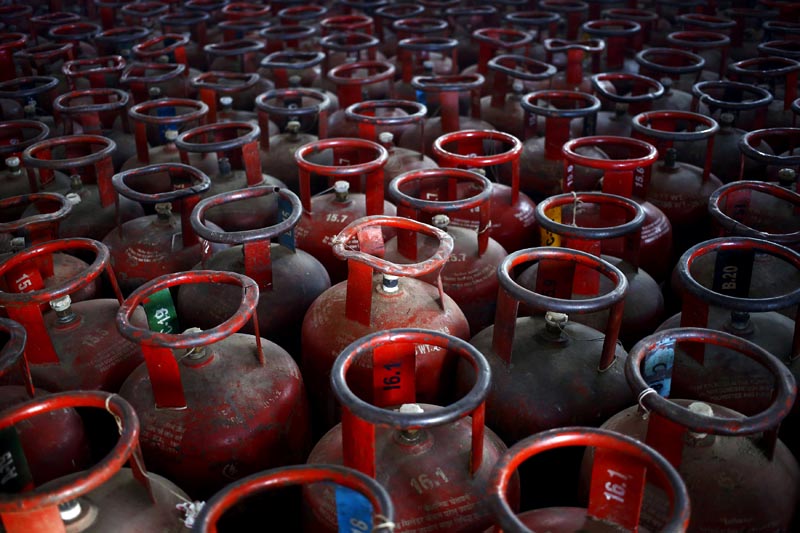Increasing incidents of LPG cylinder explosions raise questions over quality
Kathmandu, March 26
The increasing number of instances of liquefied petroleum gas (LPG) cylinders exploding in recent years have raised serious concerns over the quality of available LPG cylinders in the country. There are more than 10 million LPG cylinders in circulation in the country.
In one recent case, four people were killed due to the explosion of LPG cylinders in Bhotekoshi Rural Municipality-4, Sindhupalchowk, on Monday. This is just one of many cases of fatalities due to such incidents in recent times.
Earlier in January, a woman was killed and four others sustained injuries after a cooking gas cylinder exploded in Deep Jyoti of Tokha Municipality-9, in the northern outskirts of Kathmandu. Similarly, a number of persons sustained injuries in a separate gas cylinder explosion incident in a temple in Simariya of Sunsari district and also in Kawasoti-8 of Nawalparasi district in the recent past. In May 2016, three people were killed after a cylinder of HP Gas exploded in Lalitpur. In a separate incident in the same month, one person was killed and six were injured when an LPG cylinder of Sugam Gas exploded in Kalimati.
Consumer activists say that consumers need to be aware while using LPG cylinders to prevent such accidents but the problem is that LPG bottlers are compromising on the quality of cooking gas cylinders by sending outdated LPG cylinders in the market.
“We can see a number of LPG cylinders in the market that are very old and whose use itself is dangerous.
However, neither the government nor LPG bottlers have been taking the ‘quality factor’ of LPG cylinders seriously,” said Madhav Timalsina, President of Consumers’ Right Investigation Forum.
Even the government bodies responsible for maintaining the quality of such products acknowledge that the market is flooded with low quality LPG cylinders. The law requires hydraulic testing, which measures a cylinder’s capacity to withstand pressure, after an LPG cylinder is 10 years old and once every five years thereafter. “However, a majority of LPG cylinders in the market have not undergone hydraulic testing though they are over 10 years old,” said Bishwo Babu Pudasaini, director general of Nepal Bureau of Standards and Metrology (NBSM).
However, Pudasaini claims that the department is doing its best to ensure that LPG bottling plants maintain necessary security standards and ensure quality in LPG cylinders supplied in the market.
Earlier in January last year, NBSM had said that it would shut down those LPG bottling plants in the country that have not acquired the Nepal Standard (NS) certification from the government. However, almost a dozen LPG plants across the country have been operating without acquiring NS certification.
Meanwhile, LPG bottlers claim that they have giving due priority to security standards in the LPG bottling plants and LPG cylinders. “As LPG cylinders are very sensitive, consumers should also be aware about handling them properly,” said Shiva Ghimire, immediate past president of Nepal LP Gas Industry Association.






